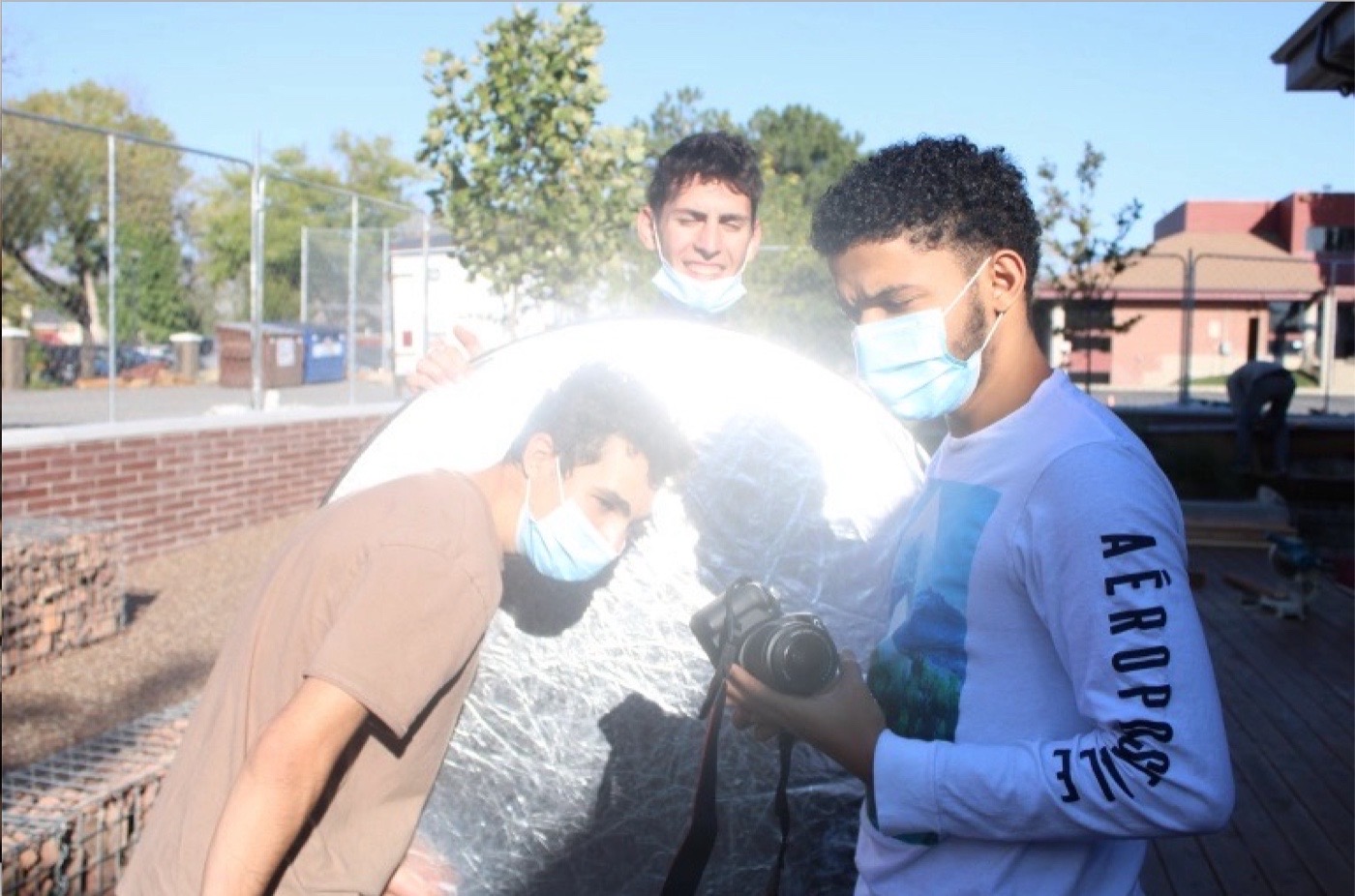The U Department of Film & Media Arts has collaborated with UNP Hartland Partnership Center to offer an introductory film course as part of the Youth Voices program, serving young people in the south west side of Salt Lake county.
The following story is shared from UNP’s annual publication, Community Voices
HARTLAND SCHOLARS: Youth Voices and Intro to Film
By Ana Antunes, Assistant Professor, Gender Studies
Joshua Samson, Graduate Assistant, Education Leadership & Policy
Jeilani Athman, Student Success Advocate
Jarred Martinez, Education Pathways Partnership Manager, UNP
Youth Voices is a youth participatory research-based partnership hosted at the UNP Hartland Partnership Center. In its seventh year, Youth Voices was developed to increase educational opportunities for young people on the south west side of Salt Lake county. In order to fulfill this goal, Youth Voices engages youth through art, research, and prosocial activities. In partnership with faculty and staff from multiple departments at the University, the pursuit of this work has also inspired the emergence of what we’re calling Hartland Scholars. Hartland Scholars is an early-college credit program, centering the youth, values, and experiences of the community we work with, while challenging the expectations and barriers that exist in other early admissions programs.
As part of this growing pathway, students are taking Introduction to Film 1110 at Hartland, instructed by Joshua Samson. Students are learning technical and artistic aspects of filmmaking, representations of stereotypes, and basics of film production. Youth will also be making their own short films, as a form of counternarrative to Hollywood representations. Below are some reflections with Joshua Samson, expanding on the importance of this class and how it aligns with Youth Voices.
How does this course expand and deepen the Youth Voices way of thinking and learning?
JS: Students apply many of the concepts from Youth Voices into an analysis of film, which is one major marker of American culture. They unpack some of the hidden messages found in film and interrogate how dominant ideologies play out.
Why is understanding and examining media in this way so important?
JS: Media is pervasive in all young people’s lives and so learning to create their own media is one step towards media literacy. Instead of being passive consumers of media, they can begin to become active producers.
As a professor, what is an insightful or memorable experience you’ve had with this group?
JS: The students have been very engaged in applying the aspects of filmmaking. When we did a simple cinematography project, they were running around, imagining how they would film a scene. They are far more engaged than many of my other college students and I’ve been teaching for over a decade.
Upon successful completion and admission to the University of Utah, High school students will receive general education credit. However, just as importantly, they are also sharpening their abilities to read and write the world around them in creative ways.
Here are what some students had to say about what they’ve learned so far.
“[I] learn where movies come from, about different genres, about all the work that goes into making film and learned more about films that are not made in Hollywood.” — Fatima
“I learned about camera movements and different sounds and how it triggers different emotions. When you watch a movie you don’t usually think about the history of movies, but when you think about representation and people of color in films, it is important that we realize how far we still have to go.”
— Vicky

